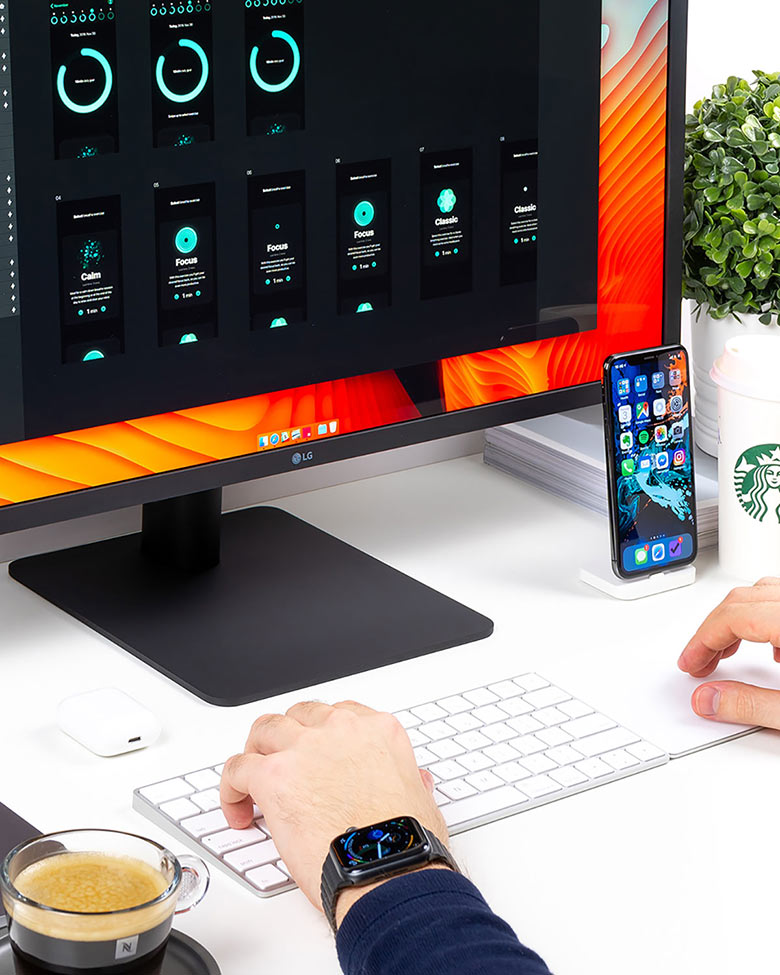
Long-form guide — practical, tactical, and up-to-date (2025).
This post explains what changed in Core Web Vitals (CWV) 2.0, why those changes matter, how to measure them, and — most importantly — step-by-step optimizations you can apply across modern stacks (static sites, WordPress, React/SPAs, mobile-first sites). Wherever possible I cite Google’s own guidance and major CWV resources.
Key sources used for the most important facts in this post: Google’s Core Web Vitals documentation and blog posts (official definitions and INP rollout), and the web.dev guidance on LCP/INP/CLS and optimization.
Executive summary (read this if you’re in a hurry)
- Core Web Vitals 2.0 is not a single metric but an evolution: Google has finalized INP (Interaction to Next Paint) as the interactivity metric replacing FID, refined measurement rules for CLS and LCP, and placed more emphasis on continuous, real-user measurement (field data), plus better tooling and signals in Search Console and Lighthouse.
- Practical impact: Search ranking signals now reward holistic responsiveness (INP) and stable loading behavior more than ever — so single-shot lab fixes aren’t enough. You must measure in the field (CrUX / Real User Metrics), optimize loading, and reduce layout shifts at the component level.
- Optimization priorities for 2025: (1) Reduce longest interaction delays (INP), (2) shrink Largest Contentful Paint (LCP) timing, (3) eliminate unexpected layout shifts (CLS), (4) instrument real-user monitoring (RUM) and lab tests, and (5) bake CWV into build and release pipelines.
1 — What changed in “Core Web Vitals 2.0”?
In practice, “Core Web Vitals 2.0” refers to the set of updates and clarifications Google has enacted since the original Core Web Vitals rollout. The key changes to understand in 2024–2025 are:
- INP replaced FID as the recommended interactivity metric. INP looks at the longest interaction latency during a page visit (not just first input), giving a more realistic picture of perceived responsiveness. INP became part of CWV in 2024 and is now the stable primary interactivity metric.
- Refinements to CLS and LCP measurement — Google has refined how LCP candidates are chosen and how CLS is measured (lab vs. field differences, lifecycle considerations). The focus is to reduce noisy signals and better reflect real user pain points.
- Stronger emphasis on field data / RUM — Lab tests (Lighthouse) are still useful, but Google’s ranking signal for page experience relies on field data (CrUX). Expect guidance and tooling to push you toward continuous RUM.
- Better tooling and docs: Google and community tools (web.dev articles, Search Console reports, updated Lighthouse audits) provide actionable guidance for INP, LCP, CLS and how to measure/track them.
Why these changes matter: FID could hide persistent interactivity problems after the initial load. INP penalizes pages where later interactions (e.g., click-to-open modals, in-page controls) are slow. In short: users now experience your site over a session — not only during the first input — and Google rewards pages that are consistently responsive and stable.
2 — The three primary metrics now (short definitions)
- Largest Contentful Paint (LCP): Time from the navigation start until the largest content element (image, video poster, block-level text) is rendered. Aim: ≤ 2.5s for “good” (Google’s established benchmark; keep an eye on evolving thresholds).
- Interaction to Next Paint (INP): Measures responsiveness by tracking the duration from a user input (click, keypress, tap) to the next time the page actually renders a frame reflecting that input. The page’s INP score is based on the longest interaction observed (ignoring outliers). Aim: < 200ms is commonly quoted for “good,” but treat thresholds as guidance; monitor your audience’s distribution.
- Cumulative Layout Shift (CLS): Sum of unexpected layout shifts that occur while the page is visible. Aim: CLS < 0.1 (Google’s previous baseline; recent guidance refines scoring practices). The goal is zero unexpected shifts.
(Note: Google’s docs are the source of truth for exact thresholds and measurement details; consult them when you need the definitive numeric cutoffs.)
3 — Measurement: field data vs lab data — what you must track
Field data (CrUX / RUM) — required for accurate ranking signal assessment. Collect via:
- Google Search Console’s Core Web Vitals report (site-wide & URL groups).
- Chrome User Experience Report (CrUX) or BigQuery exports.
- In-house RUM (e.g., using the web-vitals JS library to send LCP/CLS/INP to your analytics backend).
Lab data (Lighthouse, WebPageTest) — reproducible and deterministic; use for debugging and verifying fixes in isolation (but don’t rely on it to know what real users experience).
Why both? Lab data helps you identify root causes and regressions; field data tells you whether the changes improved real user experience and ranking signals.
Action: Set up RUM to collect percentiles (75th/95th) for INP and LCP across device classes and connection types. Track CLS at per-page/component level and log the contributing elements.
4 — Deep dive: INP (Interaction to Next Paint) — how it works and how to optimize
How INP is calculated (practical version)
- The metric collects timings for qualifying interactions (clicks, taps, key presses).
- For each interaction it measures the latency until the page paints the next frame reflecting the interaction.
- The final INP reported for a page is essentially the longest interaction latency observed (with some measures to ignore outliers).
- Because INP looks across the whole session, it highlights persistent interactive jank — e.g., slow event handlers, heavy main-thread tasks, or long-running JavaScript.
Typical causes of poor INP
- Long tasks on the main thread (>50–100ms) that block interaction processing.
- Large JavaScript bundles and blocking parsing/evaluation.
- Heavy synchronous work inside event handlers (e.g., synchronous fetch transforms, heavy DOM traversal).
- Rendering-blocking third-party scripts (ads, tag managers, analytics).
- Unoptimized frameworks or expensive React lifecycle methods running on user interaction.
Optimization checklist for INP (practical)
- Measure first (RUM + synthetic):
- Add web-vitals and collect INP measurements per URL.
- Produce percentile-based dashboards (50/75/95).
- Break up long tasks:
- Use requestIdleCallback, setTimeout(…, 0), or scheduleMicrotask carefully to yield to the main thread.
- For frameworks, use scheduler APIs (React’s startTransition) and split heavy work.
- Avoid expensive work on interaction:
- Make event handlers concise; defer non-essential work.
- Convert sync work to async where possible (e.g., await network calls rather than blocking).
- Use passive listeners where appropriate:
- For touchstart/touchmove and wheel events, set {passive:true} so the browser can optimize scrolling.
- Code-split and lazy-load:
- Defer non-critical JS until after interaction-critical code runs. Use route-level code-splitting (React, Vue) and component-level lazy loading.
- Optimize third-party scripts:
- Load third-party scripts asynchronously, sandbox them in iframes, or serve via stable, performant providers. Audit third-party impact (GTmetrix, WebPageTest filmstrip).
- Main-thread profiling:
- Use Chrome DevTools Performance tab to find long tasks and inspect call stacks. Resolve root causes (e.g., heavy polyfills, serialization).
- Use web workers where possible:
- Offload expensive computations to Web Workers. For DOM updates, compute heavy maths in a worker and postMessage results.
- Prefer CSS animations / transitions over JS where possible:
- Hardware-accelerated animations (transform/opacity) avoid main-thread jank.
- Server-side rendering (SSR) + hydration strategy:
- Use progressive hydration or partial hydration (islands architecture) so interactive parts are usable sooner without waiting for full JS.
Code example: making an expensive click handler async
// bad: heavy synchronous work
button.addEventListener(‘click’, () => {
doExpensiveWork(); // blocks main thread
});
// better: defer non-critical work
button.addEventListener(‘click’, () => {
fastUiUpdate(); // immediate minimal update
setTimeout(() => {
doExpensiveWork();
}, 0);
});
Result expectations: Fixes that shorten long tasks and move heavy work off the main thread will reduce INP significantly; small surface-area changes (e.g., removing one heavy third-party) can yield big wins.
(Optimizing INP best practices are detailed on web.dev).
5 — LCP (Largest Contentful Paint): improvements and practical tactics
What counts as the LCP element?
- The largest image (including background image) or the largest block-level text element visible in the viewport during load.
- LCP is influenced by server response time, resource load order, render-blocking CSS/JS, and client-side rendering strategies.
Primary causes of poor LCP
- Slow TTFB (Time to First Byte) — server slowness or backend latency.
- Render-blocking CSS/JS delaying paint.
- Images not optimized (large images, uncompressed formats).
- Client-side rendering that delays meaningful paint (heavy JS hydration).
- Fonts causing FOIT/FOUT and delaying text render.
LCP optimization checklist
- Server & CDN
- Reduce TTFB: optimized hosting, cache responses, edge caching via CDN, use serverless or edge functions for frequently requested pages.
- Use HTTP/2 or HTTP/3 where possible.
- Optimize resource loading
- Preload critical LCP resources (images, hero fonts) using <link rel=”preload”>.
- Ensure critical CSS is inlined or loaded fast; avoid huge critical CSS payloads.
- Defer non-critical JS (defer/async) and move scripts below the fold.
- Images
- Use modern image formats (AVIF, WebP) with appropriate fallbacks.
- Serve responsive images with srcset and sizes.
- Resize server-side; avoid sending huge images just to scale them in the browser.
- Fonts
- Use font-display: swap or optional to avoid long FOIT.
- Preload key fonts.
- Client rendering
- For SPAs, SSR or hybrid rendering helps reduce LCP.
- For heavy apps, consider partial hydration/islands so the hero can paint quickly.
- Critical rendering path
- Audit render-blocking resources.
- Inline small critical CSS and defer non-critical stylesheets.
- Measure LCP candidates
- Use the PerformanceObserver LCP API in RUM to know which element is the LCP on real sessions and optimize that element specifically.
Example: Preloading a hero image
<link rel=”preload” as=”image” href=”/images/hero.avif”>
Preloading helps the browser prioritize the LCP candidate, but don’t overuse preload (it increases early bandwidth).
6 — CLS (Cumulative Layout Shift): root causes and surgical fixes
What counts as a layout shift?
- Any unexpected change in position of visible elements between frames, excluding shifts caused by user interaction.
- Ads, images without dimensions, dynamically injected content above existing content, webfonts swapping with FOUT/FOIT, and late DOM insertions are frequent culprits.
CLS optimization checklist
- Always include dimensions
- For images and video elements, set width and height attributes or aspect-ratio CSS so the browser can allocate space.
- For responsive images, use CSS aspect-ratio or wrap with a container that enforces space.
- Reserve space for dynamic content
- Reserve placeholder space for ads, iframes, or components where content may be injected later.
- Use CSS containers with min-height or aspect-ratio to prevent shifts.
- Avoid inserting content above existing content
- Don’t inject banners or elements above the fold after load unless the layout already reserved space.
- Stagger web font loads and use swap
- Use font-display: optional or swap to reduce layout shifts related to font swaps.
- Manage third-party content
- Use fixed-size wrappers for ads or third-party embeds and lazy-load them inside reserved slots.
- Monitor contributor elements
- In RUM, record which elements contributed to CLS and their selectors. Then prioritize fixes by frequency and impact.
Small code pattern to reserve space for images
.hero {
aspect-ratio: 16/9;
width: 100%;
}
.hero img {
width: 100%;
height: auto;
display: block;
}
Tip: CLS is cumulative across the page life — a single shift of a large element is worse than many small shifts. Fix the biggest contributors first.
7 — Tooling: what to use and how to integrate it into your workflow
Primary tools
- Google Search Console – Core Web Vitals report: site-level view of field performance (CrUX-based). Use it to find URL groups failing thresholds.
- web.dev & Google’s docs: canonical docs for metric definitions and debugging.
- Lighthouse (Chrome DevTools / Node CLI): lab audits for guided fixes — use for dev testing.
- WebPageTest (WPT): filmstrips and waterfalls to see resource timing and visual progress.
- RUM libraries: web-vitals (official lightweight JS library) for sending LCP/CLS/INP to your analytics backend.
- Performance monitoring platforms: Datadog, New Relic Browser, SpeedCurve, or bespoke dashboards harnessing CrUX BigQuery exports.
Integrating into CI/CD
- Run Lighthouse CI during PRs and gate releases on key metrics (e.g., avoid regressions in LCP or INP).
- Include automated bundle size checks and main-thread long task alerts.
- Add RUM alerts for percentile regressions (e.g., 75th percentile INP > 250ms triggers incident).
Example: small RUM snippet using web-vitals
import {getLCP, getCLS, getINP} from ‘web-vitals’;
function sendMetric(name, value, attrs = {}) {
fetch(‘/api/measure’, {
method: ‘POST’,
body: JSON.stringify({name, value, attrs}),
headers: {‘Content-Type’: ‘application/json’}
});
}
getLCP(report => sendMetric(‘LCP’, report.value, {id: report.id}));
getCLS(report => sendMetric(‘CLS’, report.value));
getINP(report => sendMetric(‘INP’, report.value));
8 — CMS & platform specific tips
WordPress
- Use a fast theme (avoid heavy page builders or optimize them). Consider headless WordPress for complex sites.
- Use image optimization plugins that serve AVIF/WebP and generate responsive sizes (e.g., native image handling in modern WP hosts or plugins).
- Defer or conditionally load plugins that inject scripts or heavy DOM.
- Use server-side caching + edge CDN, and ensure critical CSS is optimized.
- For WP-based e-commerce, prioritize product page LCP (hero image) and reduce third-party checkout scripts until after interactivity-critical parts load.
Shopify / BigCommerce
- Optimize hero images and use CDN-hosted storefront images.
- Move non-critical apps (third-party scripts) to after-the-fold load where possible.
- Audit theme JS and minimize heavy runtime logic.
Single Page Apps (React/Vue/Angular)
- SSR + hydration, or partial hydration / islands architectures to reduce LCP and improve interactivity.
- Use route-based code-splitting and prioritize interactive components for early hydration.
- Use web workers for heavy client-side computations.
9 — Third-party scripts: how to audit and tame them
Third-party scripts (ads, analytics, social widgets) are among the most common sources of CWV pains. They can block the main thread, load large resources, or cause layout shifts.
Audit steps
- Run a DevTools Performance trace and inspect third-party script activity.
- Use Coverage tab to find unused JS shipped by third parties.
- Prioritize by impact: scripts that appear in the critical path or create long tasks are higher priority.
Mitigation strategies
- Load non-essential third-party scripts with async or defer and insert them after page load.
- Use iframe sandboxes for heavyweight widgets to prevent main-thread blocking and layout shifts.
- Where possible, self-host small vendor scripts (only if license permits and you can keep them small and updated).
- Consider server-side tagging (server-side GTM) to control when and how measurement code runs.
10 — Accessibility & CWV: overlapping goals
Improving Core Web Vitals often helps accessibility:
- Faster LCP and lower INP mean users with assistive tech get faster feedback.
- Reducing CLS prevents keyboard/mouse focus loss due to element shifts.
- Ensure focus management and aria-live regions aren’t causing layout shifts (e.g., inserting content above keyboard focus).
11 — Practical audit: step-by-step plan you can follow this week
Day 1: Baseline & triage
- Pull Search Console CWV report; list worst-performing URL groups.
- Instrument web-vitals on a representative set of pages (if you don’t have RUM yet).
- Run Lighthouse and WebPageTest for representative pages (mobile slow 3G / mid-tier devices).
Day 2: Fix low-hanging fruit
- Add width/height or aspect-ratio for images/video placeholders.
- Preload hero image(s) and priority fonts.
- Defer non-critical JS and remove render-blocking CSS where possible.
Day 3: Deeper engineering
- Break up long tasks found in DevTools Performance.
- Move heavy third-party scripts behind user gestures or timeouts.
- Implement code-splitting and lazy-load non-essential modules.
Day 4: Measure & iterate
- Re-check RUM and lab results.
- For remaining worst pages, profile main-thread and DOM changes in more depth.
- Implement partial hydration or server-side rendering for the most problematic pages.
Ongoing:
- Add CWV checks into CI (Lighthouse CI) and set alerts for RUM percentile regressions.
12 — Example case studies (mini)
Case study: E-commerce product page (before → after)
- Problem: LCP dominated by large hero image and product gallery; INP long when opening image carousel; CLS due to dynamically injected “recently viewed” widget.
- Fixes applied:
- Preload hero image, serve AVIF responsive images.
- Lazy-load gallery images; render visible image immediately.
- Replace synchronous gallery logic with low-cost skeleton and lazy initialize carousel only on first interaction.
- Reserve space for “recently viewed” widget and load content asynchronously into placeholder.
- Results: LCP improved from 4.2s → 1.9s; INP 95th percentile from 620ms → 160ms; CLS from 0.25 → 0.02.
Case study: Content-driven blog
- Problem: CLS from ads and newsletter interstitials; fonts causing layout shifts.
- Fixes applied:
- Reserve ad slots with fixed aspect boxes.
- Use font-display: swap and preload the critical font subset.
- Move the newsletter interstitial into an overlay that appears only after reserved placeholder shows.
- Results: CLS decreased to near-zero and LCP improved slightly due to fewer blocking resources.
13 — Advanced techniques and emerging patterns for 2025
- Islands architecture / partial hydration
Small interactive islands (e.g., Astro, Qwik concepts) are now mature enough to ship minimal JS for each interactive component — huge wins for LCP and INP. - Edge computing for time-sensitive rendering
Pre-rendering critical parts at the edge reduces TTFB and speeds up LCP. - Progressive enhancement + progressive hydration
Deliver HTML-first experiences and perform hydration selectively (on interaction or visibility). - WebGPU & Off-main-thread rendering
For web apps doing heavy visual work, use off-main-thread strategies and GPU-accelerated rendering where supported. - Machine-driven priority scheduling
Use network information (Effective Connection Type) and device memory info to adapt the resource loading strategy live.
14 — Common pitfalls and anti-patterns
- Relying solely on Lighthouse scores — Lab results can mislead if field RUM is poor. Always prioritize real users.
- Preloading everything — Overusing preload can waste bandwidth and crowd the early network queue.
- Knee-jerk removal of third-party scripts without analysis — Some third-party scripts are business-critical; analyze impact and adjust loading instead.
- Ignoring 95th/99th percentiles — Average improvements hide tail-user suffering. Optimize for percentiles that matter to your users.
15 — Checklist & runbook (copyable)
Immediate (low friction)
- Add width/height or aspect-ratio to images/videos.
- Preload hero image and critical fonts.
- Set font-display: swap for web fonts.
- Defer non-critical JS (defer/async).
- Add web-vitals RUM instrumentation.
Medium effort
- Break long tasks; profile main-thread tasks.
- Code-split and lazy-load components.
- Move heavy third-party scripts to async/iframe/sandbox.
- Implement SSR or partial hydration for heavy pages.
High effort
- Adopt islands or partial hydration strategy across app.
- Migrate heavy computations to Web Workers.
- Integrate CWV gating into CI/CD with Lighthouse CI and RUM alerts.
16 — Sample Lighthouse & devtools workflows
- Local debugging
- Open DevTools → Performance → Record a load + user interaction.
- Inspect Main thread for long tasks; expand call stacks to find culprit functions.
- Use Coverage and Network panels to find large or unused resources.
- Synthetic validation
- Run Lighthouse from CLI (lighthouse https://example.com –preset=mobile –output=json).
- Use Lighthouse CI in pipeline to enforce no regressions.
- Field validation
- Confirm changes in Search Console Core Web Vitals.
- Check RUM percentiles for affected pages over a rolling 7–28 day window.
17 — Frequently Asked Questions (short answers)
Q: Are Core Web Vitals a ranking factor?
A: Yes — they are part of Google’s Page Experience signals. Improving CWV can boost organic performance and user engagement.
Q: Do I need perfect scores to rank well?
A: No — CWV are only one part of ranking. However, poor CWV can be a handicap; prioritize fixes where they align with business KPIs.
Q: Which matters more: LCP or INP?
A: They measure different user experiences. LCP is loading; INP is interactivity. Prioritize both, but fix the metric that most degrades your user flow (e.g., e-commerce checkouts prioritize INP).
Q: What’s the best budget-friendly hosting option?
A: Use a managed CDN with edge caching and good TTFB. Many modern hosts provide edge functions to do SSR close to users — the right choice depends on traffic patterns and budget.
18 — Putting CWV 2.0 into your team’s DNA (process & org)
- Ownership: Assign CWV metric owners — one product/engineering lead per major product area to act on RUM data.
- KPIs: Include 75th percentile INP and LCP in sprint metrics for priority pages.
- Education: Run a workshop showing DevTools Performance traces and how to fix long tasks.
- Release process: Gate major releases with Lighthouse CI checks and RUM smoke tests.
19 — Where to keep learning (official & reliable resources)
- Google’s Core Web Vitals docs and the web.dev articles (official definitions, measurement, and optimization). Google for Developers+1
- The INP rollout blog and guidance on measuring INP. Google for Developers+1
- web.dev optimization articles for INP, LCP and CLS troubleshooting. web.dev+1
20 — Final thoughts: pragmatic priorities for 2025
Core Web Vitals 2.0 represents a maturing of Google’s approach to measuring user experience. The practical implication — for SEOs, web developers, and product owners — is to treat site performance as a continuous product-level responsibility, not a one-time sprint.
Start with RUM. Measure the experience across device types and connection speeds. Prioritize fixes by user impact and business value: reduce long tasks (INP), make the hero paint faster (LCP), and stop elements from jumping (CLS). Integrate CWV checks into your development lifecycle — and reward teams for delivering faster, more stable experiences.
Appendix A — Quick reference snippets
Preload hero image
<link rel=”preload” as=”image” href=”/images/hero.avif”>
Basic web-vitals RUM sender
import {getLCP, getCLS, getINP} from ‘web-vitals’;
const send = (m) => fetch(‘/__metrics’, {method:’POST’,body:JSON.stringify(m)});
getLCP(m => send({name:’LCP’, value:m.value, id:m.id}));
getCLS(m => send({name:’CLS’, value:m.value}));
getINP(m => send({name:’INP’, value:m.value}));
Reserve ad slot
<div class=”ad-slot” style=”width:300px;height:250px;”>
<!– ad will load here –>
</div>
Appendix B — If you only do three things this month
- Install RUM (web-vitals) and collect INP/LCP/CLS. Without data you’re guessing.
- Break up long tasks and lazy-load non-critical JS. This quickly reduces INP.
- Fix layout shift root causes (images/videos/ad containers). Big wins for perceived quality.
If you want, I can now:
- Produce a tailored 2–4 week action plan for your exact site (I’ll need a few sample URLs and your platform), or
- Generate a CI/CD Lighthouse configuration and a sample web-vitals ingestion endpoint (Node/Express or serverless) you can drop into your stack.





